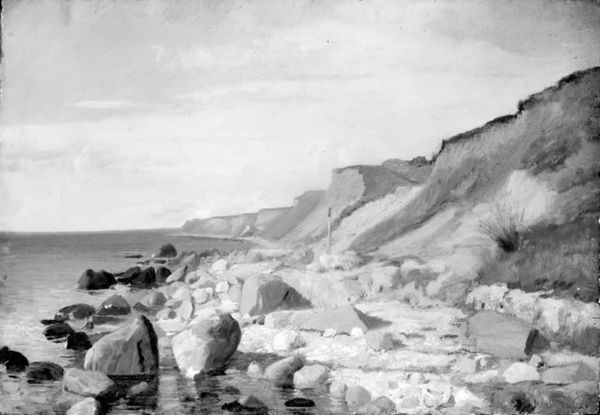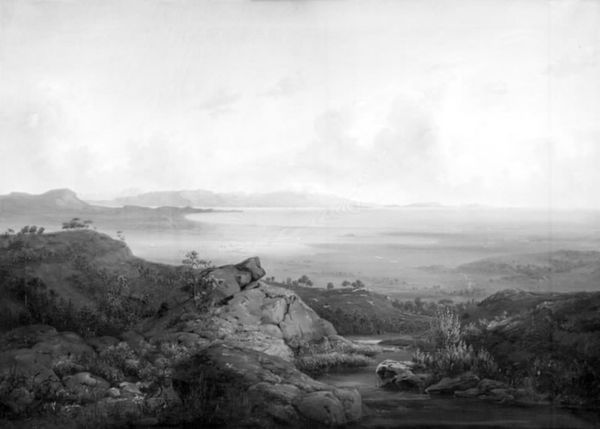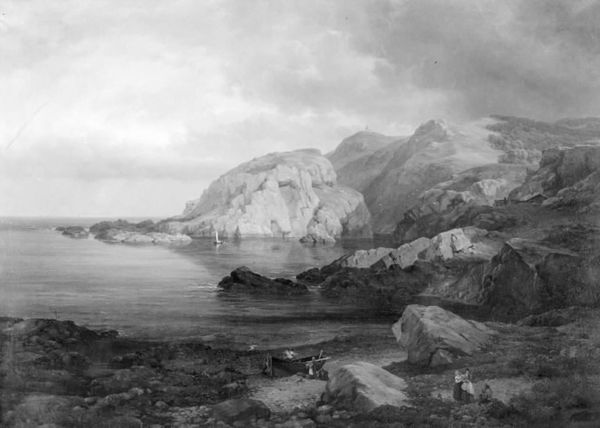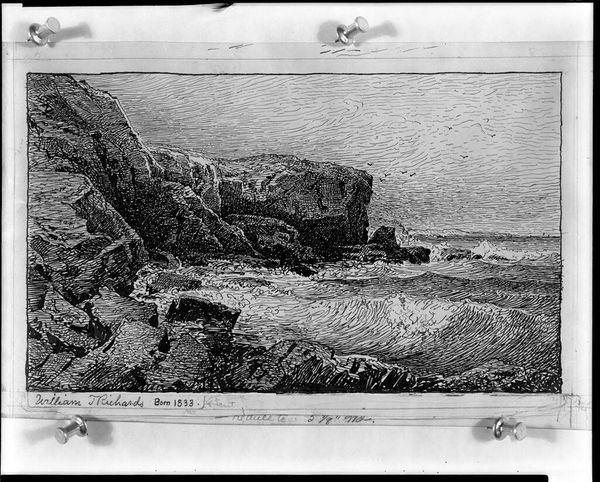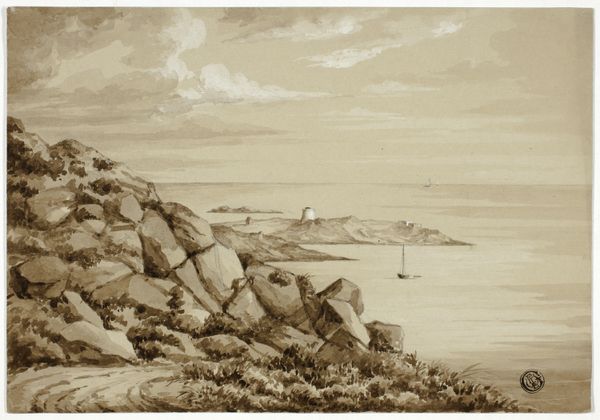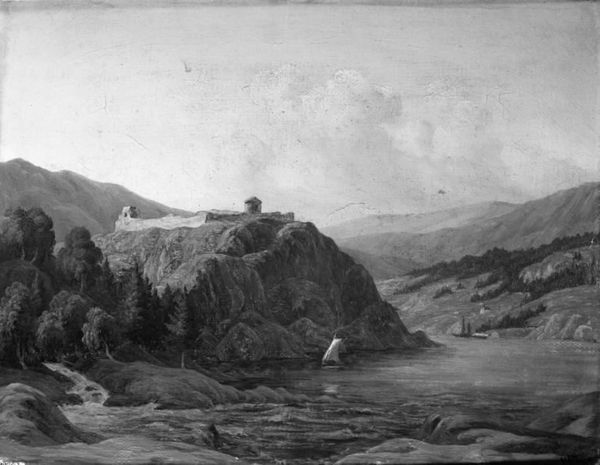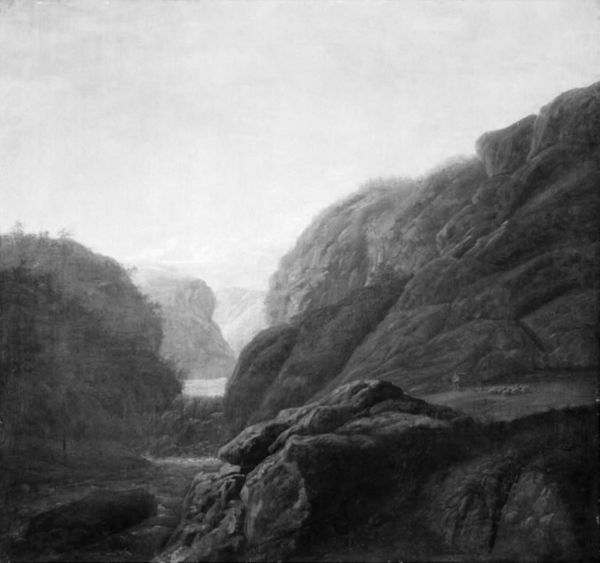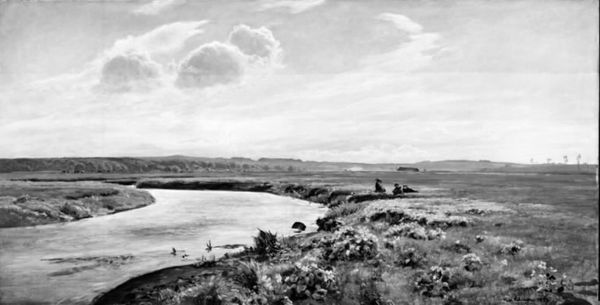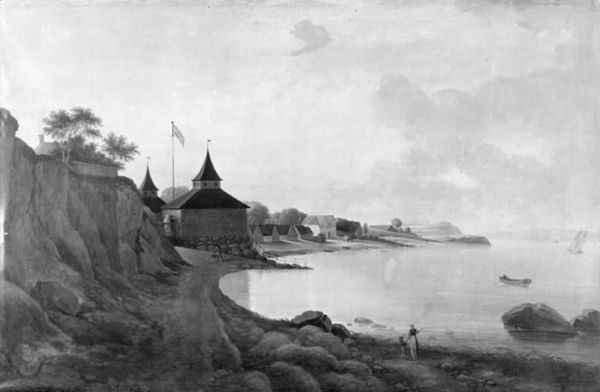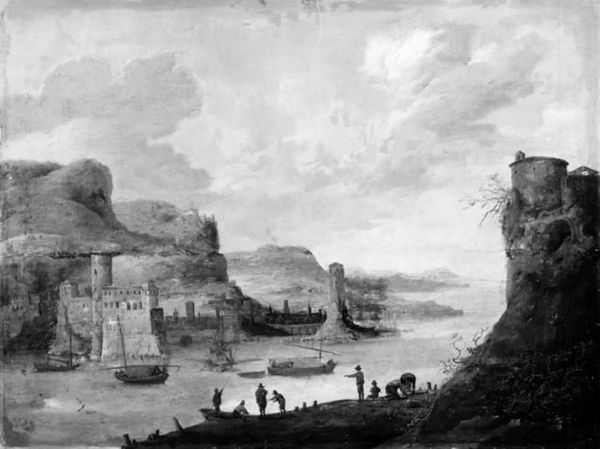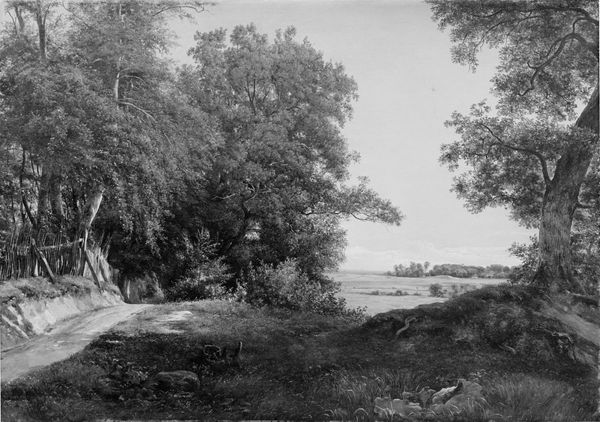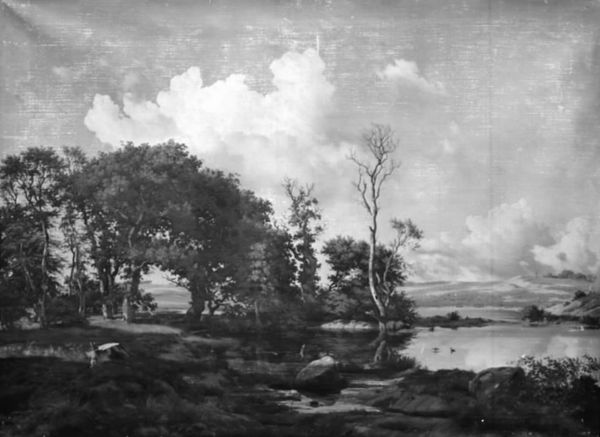
painting, plein-air, canvas
#
snowscape
#
painting
#
countryside
#
plein-air
#
landscape
#
rugged
#
canvas
#
outdoor scenery
#
romanticism
#
gloomy
#
fog
#
coastline landscape
#
cityscape
#
skyscape
Dimensions: 133.5 cm (height) x 186 cm (width) (Netto)
Editor: Georg Emil Libert's "Hammershus på Bornholm," painted in 1842, depicts a coastal view dominated by a craggy ruin. Painted on canvas, this landscape conveys a palpable sense of melancholy. What stands out to me is the bleakness of it all – the muted tones and the implied history of the Hammershus fortress. How does this image speak to you? Curator: What I see in this piece is not simply a landscape, but a deliberate construction of national identity in 19th-century Denmark. Consider the ruin itself – Hammershus, a once strategically vital fortress, reduced to a romantic, yet somber, symbol. Libert painted this en plein air. Why do you think an artist would paint in this setting and capture it like that? Editor: Perhaps to present it truthfully? Show its isolation, and decay? It's hard to tell if he’s idealizing it, or critiquing what it's become. Curator: Precisely! And there lies the tension. Romanticism, in a socio-political context, wasn't just about pretty landscapes. It was often employed to evoke a sense of shared history and cultural pride, sometimes even as a call to reclaim a lost grandeur, and establish a cultural image. This was also a period of growing national consciousness in Denmark. How do you think the selection and depiction of this particular site played into that? Editor: So, Hammershus isn't just a ruin, but a symbol carefully chosen and presented to foster a sense of Danish-ness, a unified cultural narrative linked to landscape and a mythologized past? Curator: Exactly. And paintings like this helped shape public perception of what it meant to be Danish, grounding it in specific places and a particular, often nostalgic, historical narrative. These artworks contributed to how Danes saw themselves and their place in the world. Editor: I had never considered landscape painting as something so intertwined with political and social messaging. This changes how I’ll view art moving forward. Curator: Indeed, examining art through the lens of history allows us to uncover the hidden dialogues embedded within seemingly straightforward images.
Comments
No comments
Be the first to comment and join the conversation on the ultimate creative platform.
